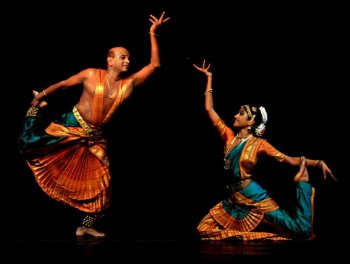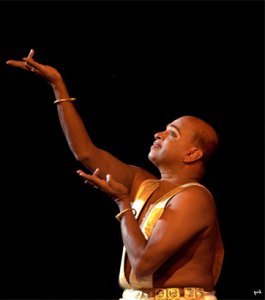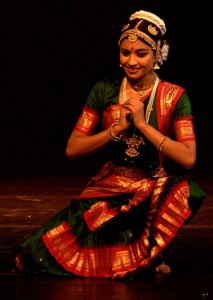
|   |

|   |
Their substance showcased the style - Jyothi Raghuram, Bangalore e-mail: jyothi.r.ram@gmail.com Photos: Akila Venkatramani August 17, 2012 With all the dance activities that continue to go on, through discourses and presentations, about the Mysore school of dance, all that one remembers of any dance recital, irrespective of the “school” or “style” of dance, is whether it was watchable and struck a chord. Essentially, it is all about a “good” or “bad” recital, after allowing room for the distinctiveness of a particular style.  The ever-popular musical piece “Brocheva” (Kamach) by Keshava was translated into an equally touching dance number, worth mulling over for the devotion so naturally showed by the dancer, and as much for the haunting music. Haunting, because the recording was over 40 years old, with simple accompaniments, clarity of sound and full of vim. For those who have been a part of the Bharatanatyam scene for this long or longer, it must surely have been a nostalgic trip down memory lane. “Bhudevi Namostuthe” (Revathi), with its effectively simple dance composition saluting mother earth, and the tillana in Hindola, turned out to be exclusive pieces which summed up the style and substance of Keshava and Sumitra. The items were gentle in every sense, the distinctiveness being in the flowing nritta patterns and the differently-evolved muktayas, besides the natural expressions aided by an even-keeled tempo. 

The recital was a show of Keshava the dancer and composer, and as a teacher, where his daughter Sumitra made him proud. One can’t help but use the clichéd phrase “sprightly dancer” because nothing else sums up her stage presence better. Bright-eyed and lively, she carried off the old-time classic “Manavi,” the pada varna in Shankarabharana, at its surprisingly fast pace (perhaps more to do with the recording than the choice of Keshava!), with quite a bit of stamina, including till the last, repetitive swara. Her wide-apart feet in nritta ate into her grace though. She also needs a better understanding of the sahitya, it appears. The vaasikasajja nayika in the Jayadeva Ashtapadi, “Naatha Hare” (Sindhu Bhairavi) was well-etched by Keshava again. Their aaharya was neat and adequate, the delicately-applied alta on Sumitra showing an eye for aesthetics. The recital was part of the Dance Discourse series got up by Ashish Mohan Khokar in association with Alliance Francaise. In far-off Basel, Keshava and his family thus seem to have carved, without much ado, a name for the Mysore style, a taste of which one had in Bangalore. Their recital encapsulated the beauty of the style, without making a fetish of it. Jyothi Raghuram is a journalist with over two decades experience in both the print and electronic media, having worked with news organizations such as PTI, The Hindu and Indian Express. Her specialized writings on the performing and visual arts have been considered as benchmarks for their comprehensive and in-depth dealing of the subjects. |